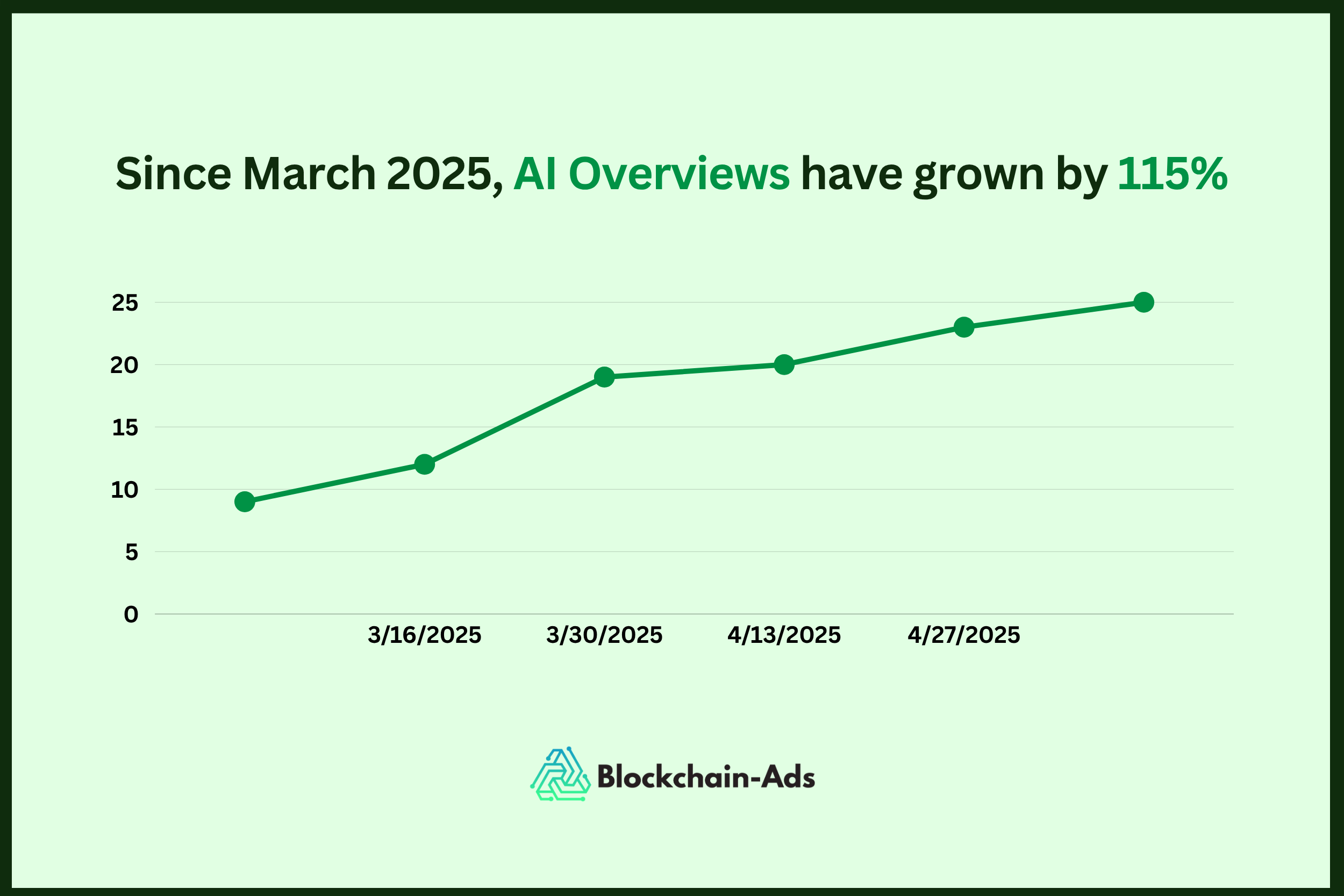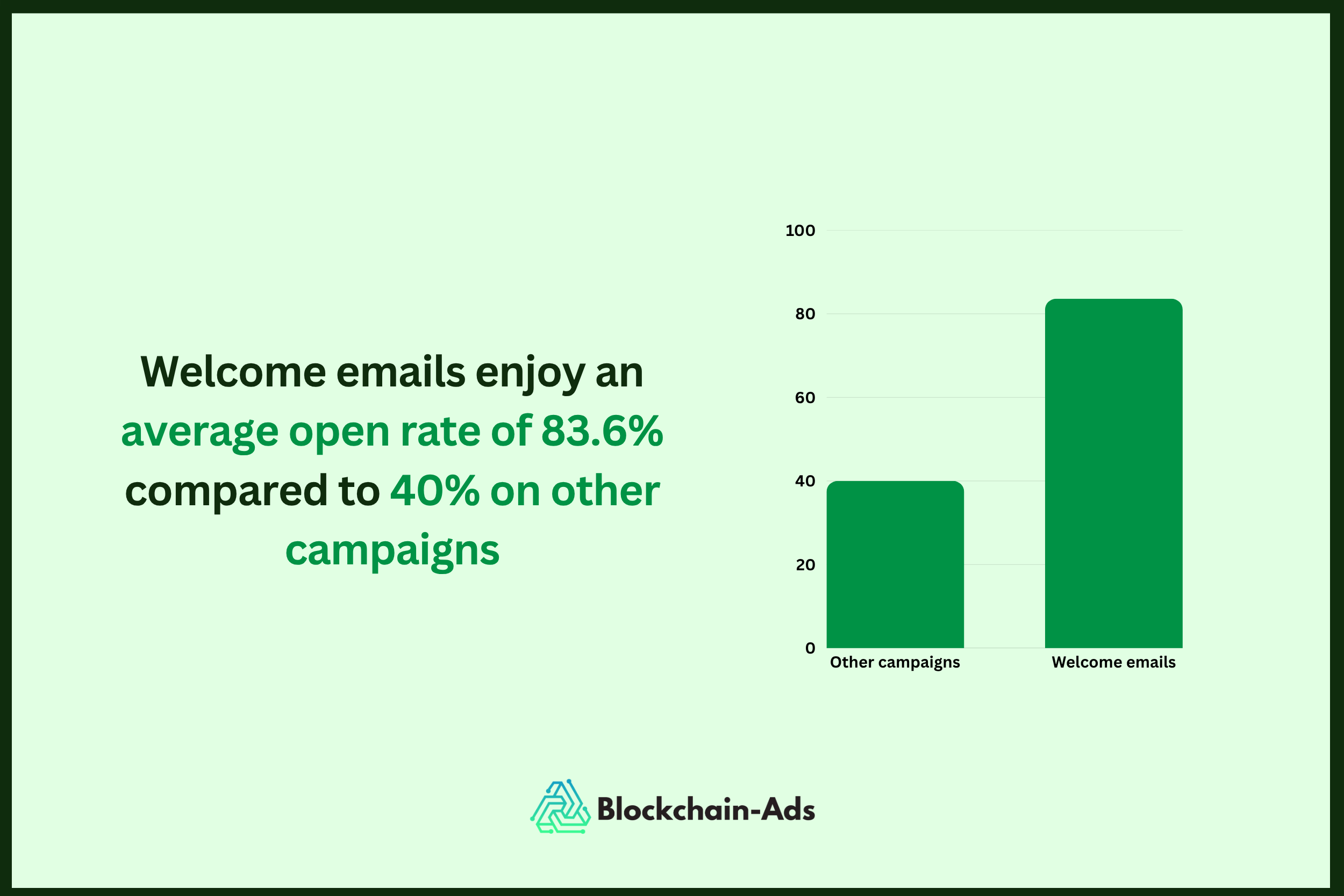Financial Marketing: 10 Digital Strategies for Financial Companies
Heading
- Cointelegraph Formula offers various ad formats to 8 million monthly readers across 190+ countries, leveraging its trusted name in crypto.
As a finance marketer in 2025, you face a fast-changing and challenging industry. Digital ad spending in banking, payments, and lending is growing by more than 20%.
But more spending doesn’t mean more customers. Each campaign is a risky gamble. Click costs are increasing, and attribution is getting confusing.
What’s worse is that platforms are now hiding targeting in their AI “black boxes.” They claim it’s for automation and better algorithms.
You’re asking yourself daily:
- Can I truly prove ROI?
- Are my dollars reaching the right people—or are they trapped in unclear algorithms?
- How do I stay compliant while moving fast enough to compete?
In this finance industry, marketing success goes beyond flashy creativity. It’s about being precise, compliant, and relentlessly accountable for every dollar spent.
This guide shares smart ways to market financial products and services. It focuses on both mainstream and regulated sectors (something for everyone).
What is financial marketing?
Finance marketing (or financial marketing) refers to the strategies and activities that financial institutions and service providers use to promote their products, build trust, and attract and keep customers, ultimately driving business growth.
It includes the marketing of banking services, insurance, investment products, financial planning, wealth management, fintech solutions, and other related financial tools to individuals, businesses, and institutions.
Financial marketing affects people's money and well-being. So, it belongs to the "Your Money or Your Life" (YMYL) category. In this area, trust, accuracy, and credibility are essential.
It's also one of the most competitive spaces in digital advertising. This niche has some of the highest keyword costs in the industry.
Additionally, the approach to financial marketing differs depending on what is being promoted and who the target audience is:
- Product vs. Service: Marketing strategies for financial products, like apps or debit cards, differ from those for services, such as planning or payment processing.
- B2B vs. B2C: Approaches differ for individual consumers (B2C) and businesses (B2B). This affects tone, complexity, channels, and how relationships are built.
10 digital marketing strategies for finance?
In 2025, financial marketing is not just about reaching many people. It’s about connecting with the right ones at the right time and with the right message.
The 10 strategies we'll explore include:
- Performance Advertising
- Content marketing and SEO
- AI-powered personalization
- PR & Sponsored Content
- Finfluencer partnerships
- Community building
- Webinars and Virtual Events
- Referral and Loyalty Programs
- Account-Based Marketing (ABM) for B2B finance
- Out-of-Home (OOH) & Digital OOH Advertising
We’ll add bonus strategies to give you more marketing options for success.
1. Performance advertising
Performance advertising is a vital part of financial marketing. Nowadays, it focuses on precision rather than just higher ad spend.
Finance brands use Google Ads, Blockchain-Ads, Meta Ads, and LinkedIn Ads to capture demand.
But with rising CPAs (finance keywords average ~$56.76), generic campaigns don’t cut it anymore. Major agencies report that clients are reducing spending. So, marketers need to focus on granular targeting and niche audiences.

Here’s what finance marketers are doing differently:
- Running small-scale campaign experiments to spot what works before scaling.
- Building clean customer journeys—from ad to landing page—to drive clarity and compliance.
- Testing creative variations and tracking which visuals and copy lead to better conversions.
- Testing newer finance-focused channels like Blockchain-Ads, often allocating 10–15% of spending there.
Finance advertisers achieve 25% higher conversion rates on Blockchain-Ads than generic display ads on other platforms.
2. Content marketing and SEO
In 2025, content marketing goes beyond Google rankings. Now, it’s about being visible on AI search engines like Perplexity, ChatGPT, and Google’s AIO.

These tools are changing how people find financial info. They prefer clear, trustworthy, and well-organized content. This content should directly answer users' questions, not just be filled with keywords.
That shift makes content a critical investment for finance marketers. This includes blog posts and thought leadership pieces to boost authority and draw organic traffic. SEO-focused content helps brands get noticed in AI search results. These results now often show summarized answers instead of just blue links.
The global finance market is set to hit $395 billion by 2025. Much of this growth will stem from people wanting dependable information. They’ll look for it through search engines and AI tools before they open accounts or sign up for services.
3. AI-powered personalization
Finance marketers are using AI to improve customer interactions and experiences across channels.
In 2025, about 85% of financial services firms will be using AI tools in their operations. In marketing, this means they can now customize emails, apps, and websites at scale. Marketers analyze first-party data to create personalized messages, suggest relevant products, and guide users based on real behavior.
Email plays a key role here. Welcome emails do much better than other types. One recent benchmark shows they have an average open rate of 83.6%. In contrast, typical campaigns only see open rates of 30–40%.

Marketers use AI-driven email flows to welcome new users, teach them, and build trust. These emails feel personal and engaging, creating a human-like connection.
The payoff is clear. Companies using AI for personalization see around 20% lower marketing costs. They also experience a 15% boost in conversion rates.
In some instances, personalization has lowered operational costs by 30%. It has also increased retention rates by over 35%.
4. PR & sponsored content
PR and sponsored content remain key parts of finance marketing in 2025. They help companies build credibility and trust in an industry where reputation matters.
The global PR industry has steadily grown. It hit $107 billion in 2023 and is expected to reach $134 billion by 2027. This growth illustrates how brands, especially in finance, place a greater value on earned media and storytelling.
For finance marketers, PR today isn’t just about press releases. It's all about sharing valuable stories. These can be:
- Customer success cases.
- Product updates that tackle real problems.
- Insights from founders that show transparency and expertise.
Sponsored content also matters a lot. Paid articles in reliable publications like Yahoo Finance, Cointelegraph, and Financial Times allow brands to reach audiences better. This approach feels more trustworthy than regular ads.
PR and sponsored content perfectly complement the YMYL nature of the finance industry. People are cautious about who they trust with their money. PR and sponsored content help marketers explain complex ideas simply. They also show customers that the brand is an expert before they engage.
5. Finfluencer partnerships
In 2025, more finance brands are teaming up with finfluencers. These are financial content creators who help build trust and expand their reach.
About 86% of U.S. marketers (across all industries) plan to use influencer marketing in 2025. Budgets remain solid: 80% of brands either held steady or increased their influencer investment, and nearly half of those raised budgets by 11% or more.
Within finance, 80% of U.S. companies now use influencers and report a median ROI of 160%.
Finfluencer campaigns work with micro- and mid-tier creators. These creators often get engagement rates of 6–7%, much higher than standard ads. They also bring authenticity, helping to simplify finance topics like investing apps or crypto tools.
However, there are some caveats to finfluencer partnerships. About 32% of marketers cite “difficulty measuring creator performance” as their top hurdle.
Also, some influencers promote advice without verification or fail to disclose key information. This can result in compliance issues.
For instance, the SEC fined VanEck $1.8 million in February for influencer nondisclosure. Finance marketers must carefully vet creators and include compliance checks in every partnership.
Still, finfluencer marketing is delivering results. Short and live content, like Instagram Stories and TikTok Lives, are on the rise. Over 52% of campaigns use it for real-time engagement. Brands that partner with 1–5 creators for each campaign enjoy solid returns, control, and consistency.
6. Community building & engagement
Finance brands are also prioritizing community-focused strategies in 2025. Nearly 90% of banks and fintechs report higher user loyalty through community features. These features include:
- Messaging groups
- Forums
- Exclusive events
In the U.S., 73% of smartphone users used a fintech app monthly in 2024. This trend shows that in-app communities are a powerful retention tool.
Community building isn’t just for retention—it’s a marketing asset. Brands with online forums on Discord, Telegram, or Reddit get up to 5× more referrals than brands without a community. These platforms allow marketers to share updates, run Q&As, and build peer-to-peer support. This engagement turns active users into advocates for the brand.
Communities also serve as controlled testing grounds. Financial companies use them to:
- Pilot new features or content.
- Gather real-time feedback.
- Identify brand advocates for marketing partnerships.
7. Webinars and virtual events
Financial marketers used webinars well before 2025. This year, they have become key for generating qualified prospects without spending on large events.
Industry benchmarks reveal that the typical webinar has a registration-to-attendee rate of about 57%. Each session draws in roughly 216 attendees, marking a 7% rise in attendance compared to last year. The typical session lasts 51 minutes, and nearly half of registrants end up watching the on-demand version as well.
Nearly 89% of B2B marketers find that webinars attract the most qualified prospects. They view this method as even more effective than other channels. And compared to broad landing pages, webinar registration pages convert as much as 59%.
Performance varies by format and structure. Webinars that last less than 45 minutes and have interactive features like polls and Q&A sessions keep attendees engaged. If the session feels too “salesy,” 78% of participants will drop off.”
Small changes can make a big difference, though. Clear agendas, quick polls during sessions, and live Q&As help reduce drop-off rates. They also boost audience engagement.
8. Referral and loyalty programs
Referral programs now account for up to 30% of new customer sign-ups for top finance apps. Referred customers have a 25% higher lifetime value than those from other channels.
Loyalty programs like fee waivers, cashback, and premium access boost repeat usage and lower churn rates. Firms in banking and fintech that offer rewards see retention rates up to 18% higher each year.
The best-performing programs are simple and transparent. For instance, “Give $20, get $20” and “free month for each friend” are effective. They are clear and simple, which makes them easy to share. They also reinforce trust because people are more likely to recommend services they genuinely use and like.
Importantly, referral and loyalty programs play a key role in compliance. They rely on specific opt-ins and straightforward rewards to minimize regulatory risk. In finance, trust matters a lot. Programs like these attract new users, strengthen brand credibility, and enhance customer satisfaction.
9. Account-based marketing (ABM) for B2B finance
In 2025, account-based marketing works well for B2B-focused finance companies. In fact, 94% of B2B marketers are now using ABM, and 90% report higher ROI from it compared to broader approaches.
ABM excels by focusing on the accounts that matter most. Instead of reaching out to everyone, marketers pinpoint high-value targets. They provide personalized content and outreach designed for each organization's needs.
This approach works well: 58% of B2B teams report bigger deal sizes. Also, 61% see better pipeline quality when marketing and sales work together.
Deeper personalization also strengthens relationships. About 30% of ABM users report twice as much engagement with C-level executives.
Advanced fintech ABM programs are using AI, intent data, and predictive analytics. Now, 75% use intent signals to find in-market buyers. Also, 79% apply AI tools to tailor their outreach.
The result? Shifting from broad lead generation to targeted engagement brings clear benefits. Deal sizes increase and win rates can rise by up to 38%.
Plus, the revenue impact often outperforms other channels.
10. Out-of-Home (OOH) & Digital OOH Advertising
Finance organizations are bringing OOH advertising back in a big way. In Q1 2025, U.S. OOH ad revenue hit a record $1.98 billion. Digital OOH (DOOH) now makes up over 34% of that total and is growing at 9% each year.
OOH wins where other media struggle. On average, an ad grabs attention for 12 seconds with 90% of ads hitting the memory impact mark. This gives OOH a 5.9× advantage over digital in terms of retention.
For finance brands, this means strong impact on a large scale. This is especially true in busy places like cities, transit hubs, and airports.
Programmatic DOOH takes this further. Finance marketers can send personalized messages using real-time data. This data includes location, time of day, and demographic patterns.
Imagine financial ads lighting up early morning in commuter-heavy zones or banking promotions on screens near universities during registration week. This kind of precision makes OOH both creative and controlled.
In short, OOH isn’t just “go big or go home.” It’s becoming a high-impact, data-driven channel that sits alongside digital marketing. It's covering gaps where screen time ends and real-world engagement begins.
Bonus finance marketing strategies
Besides the main strategies discussed, there are more strategies finance marketers use. These strategies enhance the value of each user relationship. They are particularly helpful in areas like banking, investing, payments, and insurance.
Here are a few key strategies worth mentioning:
- In‑app marketing & cross‑selling: Finance apps lose over 95% of users by day 30, with median retention around 4–9%. In-app prompts, like nudges for trading competitions or premium features, help bring back inactive users. They also boost customer lifetime value.
- App Store Optimization (ASO): On average, 53–55% of App Store page views convert to installs (35.5% on iOS, 53.5% on Android), making ASO a critical channel for organic app growth.
- Gamification: Financial gamification boosts user engagement by 100–150% compared to non-gamified apps.
Making financial marketing work in 2025
In 2025, financial marketing will focus on precision and personalization. These are essential for earning trust in this "Your Money or Your Life" (YMYL) industry.
To stand out, financial brands need to shift from broad campaigns to data-driven strategies, like:
- Performance advertising on specialized platforms like Blockchain-Ads.
- Content that is optimized for AI search engines
- Genuine community engagement
Focusing on these strategies helps finance marketers make every dollar a smart investment. This approach drives growth and builds strong customer relationships.
Qualify and get acess to Blockchain-Ads
Lorem ipsum dolor sit amet, consectetur
Quick Definition

Talk with some of our current partners
View all success stories

Reach 12M+
Engaged Web3 users across 10,000+ websites and 37 blockchains.






.avif)
.png)





